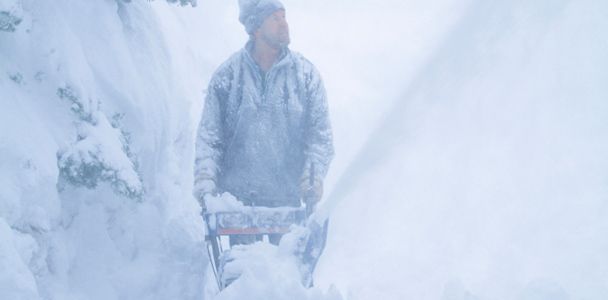Winter brings beautiful snow-covered landscapes, but it also presents challenges for homeowners and property managers. As pretty as they may be, ice and snow are hazardous for people to walk and drive on. We’ve put together a guide of tips and tricks to help you effectively remove ice and snow from your property.
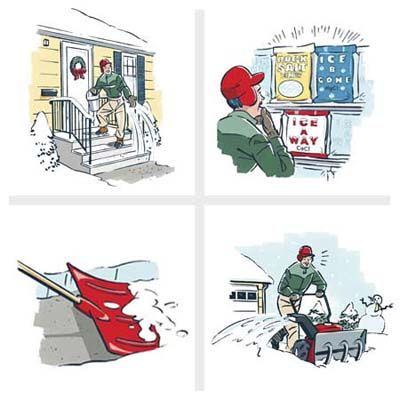
Snow and Ice Removal Basics
Safety should be your top priority when dealing with snow and ice. Wear appropriate clothing and footwear with good traction. Take frequent breaks to avoid overexertion, and be mindful of potential hazards such as hidden ice patches or snow-covered objects. If you have health concerns, consider hiring professional snow removal services.
Prompt snow removal is key to preventing ice formation. We recommend clearing snow multiple times during a storm rather than waiting for it to end. This approach prevents snow from bonding to surfaces and makes the task more manageable.
Tools for Snow and Ice Removal
Having the right tools on hand can make snow and ice removal much easier and more efficient. From shovels to snowblowers, each tool has its place in your winter maintenance arsenal.
Shovels
A good snow shovel is indispensable for winter weather management. Avoid metal blades if you’ll be shoveling softer surfaces like wooden decks. A pusher-style shovel with a C-shaped blade is a good choice for quickly clearing light and fluffy snow. Look for a shovel with the following features:
- Appropriate blade size to prevent overloading
- Ergonomic, S-shaped shaft to reduce back strain
- Lightweight plastic or aluminum blade
- Nonstick coating for easy snow release
Snowblowers
Snowblowers are ideal for clearing large, flat areas. They’re most effective when there’s at least 1 1/2 inches of snow on the ground. To maximize your snowblower’s performance, spray the exit chute with silicone or furniture polish to prevent snow from sticking and let the machine run for a few minutes after use to dry out and prevent freezing damage. Perform regular maintenance to ensure reliable operation throughout the season.
Ice Scrapers and Other Handheld Tools
In addition to shovels and snowblowers, keep ice scrapers, ice chippers, and roof rakes on hand to manage ice buildup on vehicles, walkways, and roofs.
Pre-Snowstorm Preparation Strategies
Being proactive before a storm hits can reduce the work required afterward. Implementing these strategies can help you stay ahead of winter weather.
Marking Landscape Features
Before the ground freezes, take time to mark landscape features near paths and driveways. Drive tall stakes around plant beds and other areas you want to protect. This will help guide your snow removal efforts and prevent accidental damage to your property.

Applying Liquid Deicers
Liquid magnesium chloride blends can be effective pretreatments for surfaces before a storm. Apply the solution with a garden sprayer a few hours before expected snowfall. This treatment can melt accumulations of up to 2 inches and prevent ice from bonding to hard surfaces. Use about 1 gallon for every 1,000 square feet of area.
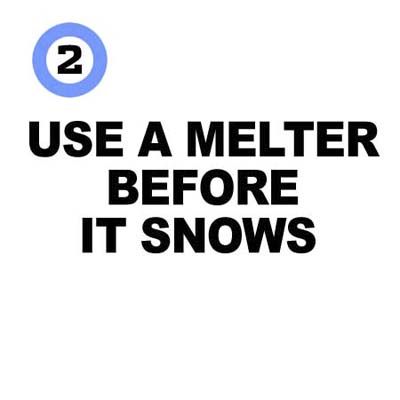
Pro Snow Removal Tips
These methods can help you clear snow more quickly and prevent ice formation.
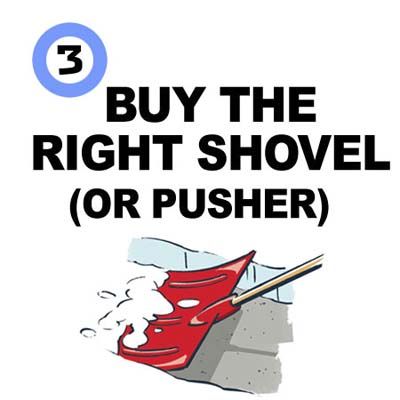
Multiple Clearing Sessions During Storms
Professional snow removers often clear snow multiple times during a storm. This approach has several benefits:
- Allows sunlight to warm cleared surfaces, reducing ice formation
- Makes each clearing session easier (2 inches is much easier to shovel than 5)
- Prevents snow from bonding to surfaces

Proper Snow Pile Placement
Where you put cleared snow is just as important as how you remove it. Avoid piling snow in these areas:
- Against foundation walls, where melting water can refreeze and cause cracks
- Near storm drains or catch basins, which can lead to flooding when snow melts
- Next to wooden structures susceptible to water damage
Instead, choose open areas away from buildings and drainage systems for your snow piles.

Roof Snow Removal Methods
Heavy snow accumulation on roofs can lead to structural damage or collapse. For roof snow removal, use a roof rake with an extended handle to safely remove snow from the ground. Work from the edge of the roof inward to prevent uneven loading. Be cautious of falling snow and ice, and avoid working directly under the removal area. For steep or high roofs, consider hiring professionals with proper safety equipment and experience.
Deicing Products and Applications
There are several deicing products on the market.

Rock Salt
Rock salt is a common and affordable deicing option. It’s effective at temperatures above 12 degrees Fahrenheit but has some drawbacks:
- Can damage plants and grass
- Less effective at very low temperatures
- May corrode concrete over time
Alternative Deicing Agents
Other salt-based deicers include magnesium chloride and calcium chloride. These options work at much lower temperatures (down to -15 degrees Fahrenheit for magnesium chloride and -25 degrees Fahrenheit for calcium chloride) and are less harmful to vegetation than rock salt, but they’re also more expensive. When applying any deicer, wear gloves and use a handheld or push spreader for even distribution.
Eco-Friendly Options for Ice Management
If you’re concerned about environmental impact, consider these alternatives:
- Alfalfa meal: Offers traction and acts as a slow-release fertilizer when the snow melts
- Sand or kitty litter: Provides traction without melting ice
- Urea: A fertilizer that can also melt ice, though it may be harder to find
These options are gentler on plants and soil but may require more frequent application.
Snow and Ice Removal on Different Surfaces
Different surfaces require tailored approaches to snow and ice removal to prevent damage.
Protecting Concrete and Wooden Structures
Concrete and wood are particularly vulnerable to damage from snow, ice, and deicing chemicals. To protect these surfaces, consider the following:
- Avoid salt-based deicers for newer concrete (less than a year old).
- Clear snow from wooden decks and stairs promptly to prevent water damage.
- Consider using rubber mats or heated mats in high-traffic concrete areas to reduce the need for chemical deicers.
- Use plastic shovels or pushers instead of metal tools on concrete and wood.
Clearing Snow From Decks and Patios
Here are some tips if you need to clear snow from decks and patios:
- Consider a heated driveway system or portable heating mats for problem areas.
- For stubborn ice on decks, use calcium chloride-based deicers, as they’re less likely to damage wood than rock salt.
- Shovel along the deck boards, not across them, to prevent catching edges.
- Use a plastic shovel to avoid scratching or gouging the surface.
Snow and Ice Removal for the Elderly and Physically Limited
Snow and ice removal can be particularly challenging for elderly individuals or those with physical limitations. Adapting techniques and seeking assistance can help ensure safety during winter months.
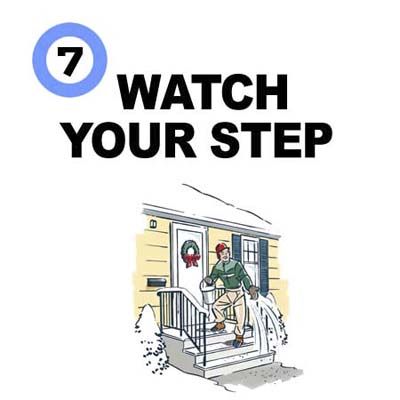
Adaptive Tools and Techniques
Several tools and methods can make snow removal more manageable for those with limited mobility. Here are a few suggestions:
- Invest in heated mats for walkways and steps to prevent ice formation.
- Try electric snow throwers for easier operation.
- Use lightweight, ergonomic shovels with adjustable handles.
- When shoveling, take frequent breaks and focus on clearing a narrow path rather than attempting to remove all snow at once.
Community Resources and Services
Many communities offer snow removal services for elderly or disabled residents. Check with local senior centers, community service organizations, and volunteer groups for assistance. Some areas also have “Snow Angel” programs, in which volunteers help clear snow for those who can’t do so themselves.
Maintaining Your Snow Removal Equipment
Take care of your snow removal tools so they’re ready when you need them. Make sure to do the following after using shovels and snowblowers:
- Check for and tighten any loose bolts or connections.
- For snowblowers, consult your owner’s manual for specific maintenance tasks, such as oil changes and spark plug replacements.
- Rinse and dry shovels to prevent rust.
- Run snowblowers for a few minutes to dry internal components.
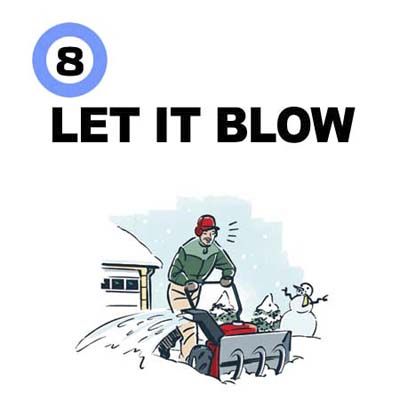
Off-Season Storage Tips
Proper storage during the offseason keeps your equipment in top condition. Here are a few ways you can extend your equipment’s lifespan:
- Apply a light coat of oil to metal parts to prevent rust.
- Clean and dry all tools before storage.
- For gas-powered equipment, run the engine dry or use a fuel stabilizer.
- Store equipment in a dry, covered area.
Consider using pervious paving in problem areas to reduce ice formation and minimize the need for frequent snow removal.
Our Conclusion
By staying on top of ice and snow removal, you can have a safer, more navigable driveway and walkways. Always prioritize safety, both in your removal techniques and in knowing your physical limits. Don’t hesitate to seek help from neighbors, community groups, or professional snow removal companies when needed.
